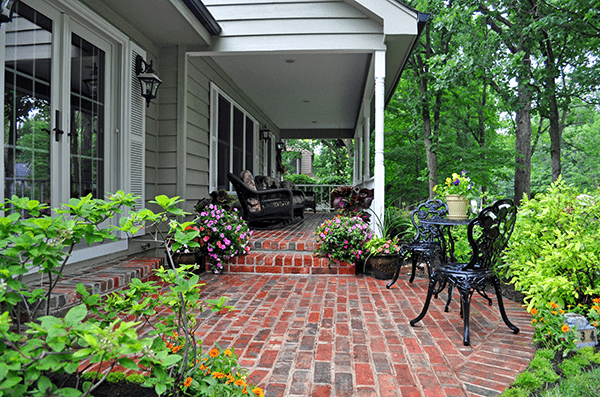Brick paver patios are frequently viewed as a commodity and pricing is sought and sometimes quoted based on that assumption. While the brick itself is a commodity the final product is all about the labor and the prep work.

There are “best practices” that apply to brick paver installations as there are to both technical and artistic functions. In the end it’s all about the skilled labor and the prep involved.
When a contractor quotes a “square foot price” you should run the other direction. The brick may be a commodity but the process is not. The brick patio process below is a solid protocol for the Chicago area.
While depth varies with patio and driveway excavations, the amount of base gravel is one of the keys to proper brick patio installation. Patios should under most circumstances be excavated to a depth of 10”. Driveways should be excavated to a minimum depth of 14”.
The excavated area should extend a minimum of 6” beyond the limits of the patio or driveway which is critical for long term stability. This is called the “over dig”.
When you see the edges of brick patios tipping it’s from a lack of over dig.
After excavation the ground should be compacted and five ounce stabilization fabric should be spread across the bottom. After that CA-6 gravel should be added in 2” lifts and compressed with a heavy grade plate compacter. The final 1” below grade should be either CA-16 gravel chips or common torpedo sand as a bedding course.
Grades should always be mechanically verified with a laser for purposes of acceptable pitch to accommodate drainage. Normal pitch on brick patio is between 1%f and 2%. This establishes proper drainage.
After the brick has been installed it is best to select a high quality edge restraint. While many products are available the restraint used is definitely a factor in the overall performance of any brick patio or brick driveway. Select the best edge restraint available. It does not cost, it pays.
Spikes should be driven at a minimum distance of 6” apart though 4” centers will provide a better support system. Again, it is one more critical effort that good landscape contractors do routinely.
Finally, joint sand, be it polymeric or not, is swept into the joints. There are a multitude of products available on the market today. Your contractor should know the best sand for your specific installation.
Good prep work and skilled labor yields good results not only in the short-term beauty of a brick paver patio but also in the long-term performance. A contractor with good skills installs a paver patio that is virtually indestructible and that will be enjoyed for years.
Remember that the brick may be a commodity but the prep work is not. The least important question is, “How much per square foot?” The most important question is, “How are you building my patio?”



